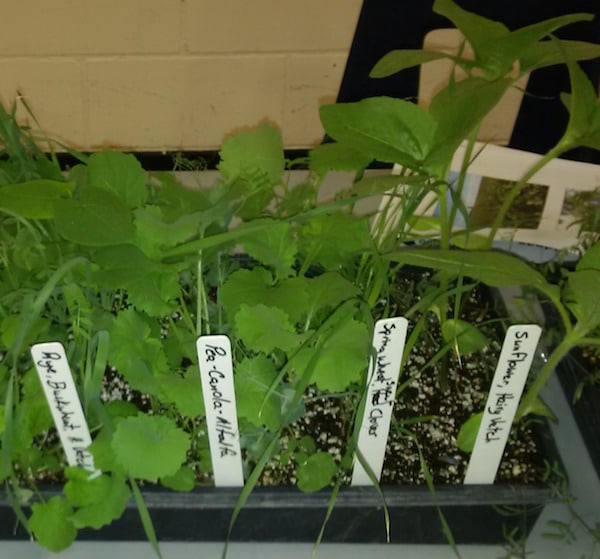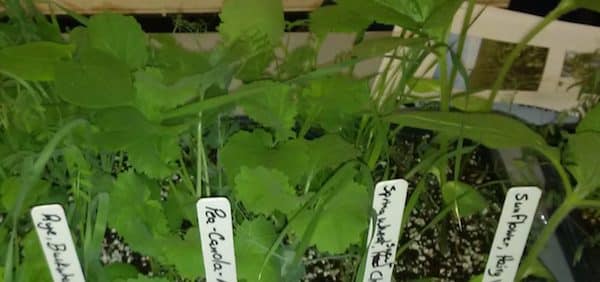Cover crops provide ground cover to avoid leaving fields bare. They provide weed competition, take up excess moisture, tie up nutrients at or near the soil surface so they’re not lost, and improve salinity. Nitrogen-fixing cover crops can increase soil nitrogen levels. Grassy cover crops act as “green manure”. All cover crops can reduce wind and water erosion of soil.

Here are some cover crop situations most likely to work in Western Canada:
—Since our growing season is shorter than typical cover cropping regions such as France, Iowa and South Dakota, we do not always have a lot of time after harvest and before winter to get a cover crop established. Techniques such as relay cropping (seeding a cover crop between rows of the primary crop) or intercropping (seeding two or more crops at once) can mimic the effect of cover crops.
—A pea-canola-alfalfa intercrop, with peas and canola straight combined together then separated, would leave the alfalfa to grow like a cover crop in the fall. Alfalfa could be kept as hay the following year or left in to provide traction during seeding then taken out with a post-seeding burnoff.
—A wheat-clover relay crop would work similar to the pea-canola-alfalfa example.
—Instead of summer fallow or chem fallow, a cover mix of annual crops (buckwheat, oat and peas, for example) would provide the cover crop benefits and then would winter kill. Growers could follow this with canola or soybeans.
—With corn and hairy vetch as relay crops, vetch will continue to grow after corn harvest (either for grain or silage). Vetch fixes nitrogen and makes great feed for grazing.
—Vetch also works in a relay with sunflowers. It provides a 60 lb./ac. nitrogen credit (soil plus biomass) and does not reduce sunflower seed yield, size or test weight. If hairy vetch seed matures, it provides additional cover crop seed to use next time or sell to other farmers. To harvest, combine the sunflowers first with a sunflower header. Then swath afterward to windrow vetch. Combining vetch helps chop up sunflower residues.
—A combination of oats, peas and clover or alfalfa can be taken off for silage or grain. Alfalfa provides N fixing all season, and by leaving the alfalfa all winter, it catches snow, increases water uptake and provides traction for the spring seeding operation.
Cover crop challenges
1. Perennials need to be removed either through grazing, tillage or herbicides.
2. Given that most growers are inexperienced with cover crops, it can be a challenge to find a species or mix that meets their goals.
3. Living plants in fields at all times can create a “green bridge” for insects, fungal cycles, viruses and bacterial blights.
4. Cover crops can result in volunteer plants and undesired seeds in the grain sample.
5. Seed for vetches, clovers and buckwheat can be hard to find and expensive.
6. Cover crops add time and labour.
7. If conditions turn dry, having a cover crop to take up excess moisture can backfire.
8. Seasons in Western Canada can be too short for many cover crop options, although the combinations provided above are tailored to Western Canada.
9. The U.S. has a subsidy for cover crops. Canada does not.
10. In a rented situation, why bother with cover crops since the benefits often take time to materialize?
11. With nutrient immobilization, fertilizer that would have been used by cash crop is locked in cover crop residues. It will be released at some point but takes time.
12. In-crop herbicide control of the cover crop may be difficult. Small clover leaves may be physically covered by canola leaves, for example.
—Thanks to Scott Chalmers, diversification specialist with MAFRD’s Westman Agricultural Diversification Organization in Melita, for this content. Scott spoke on cover crops at canoLAB in Brandon in 2016. Chalmers thinks our best chance for classic cover cropping is in fallow, after an early winter wheat harvest or after ensiling barley or oats.
